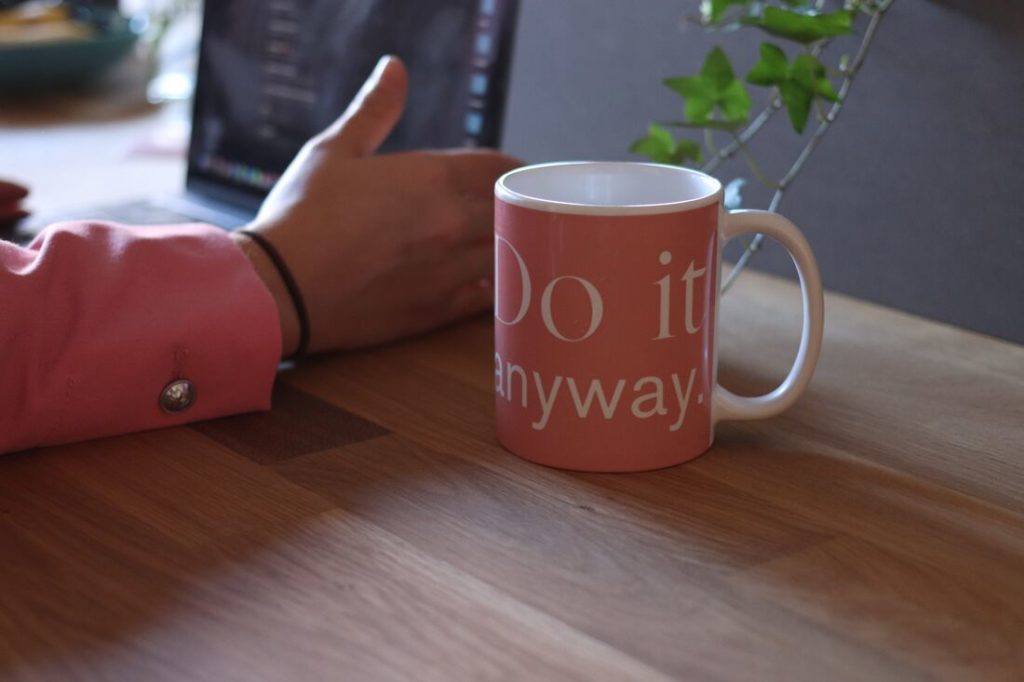The list of things I wish I’d known when I started my business is too long to count, but one of them is this: the sooner you start tracking your time, the more money you will make. Want to know more?
Time tracking doesn’t have to be hard, but it does mean building a new habit. To successfully build any new habit you have to know why it’s worth the effort, so let’s talk about why you will be kissing my feet 5 years from now if you take my advice and start to track your time.
{LOVE NOTE:If you’ve been in business a while and haven’t been doing this, don’t beat yourself up about it. Just start today.❤️}
Okay, so here’s why it matters:
1) Time Tracking helps you avoid Shiny-Object Syndrome. Tracking our time helps us resist shiny-object distractions. When you “clock in” to work on the Johnson project, or to write your newsletter, then it’s easier to ignore phone and email notifications. And if you *do* have to stop what you are doing to address another situation, by clocking *out* on this project and clocking *in* to that one, you’ll create instant focus even as you segue from one project to another.

2) Time Tracking helps you make more Money Money Money!
Since tracking your time helps you stay more focused (see point #1) you’ll be less distracted and have less “switching cost.” Switching cost is the mental work you have to do to refocus on a task or project after your attention has been taken away to something else. Switching costs may seem tiny, just a few seconds or a minute to get back into your flow, but do that dozens of times while trying to complete a task (like looking at Facebook notifications while writing this blog lol) and suddenly you’ll know why it took you three hours to write that blog when it should have been done in an hour. Had I focused first on the blog, and then on my social media, the total time would have been less than the time it took switching back and forth. Research by psychologist Dr. David Meyer indicates that even brief mental blocks created by shifting between tasks can cost as much as 40 percent of someone’s productive time!
How does that relate to making money? Well, if more focus means more productivity, that means you’ll get your work done in less time. If that work is updating your website for improved SEO, the sooner you get it done, the sooner your website traffic will improve (Money) and the sooner you can stop working on your business and go back to working on your billable designs (Money).
On top of that, if you bill your clients a flat fee, then you’ll also make more money because all that focus will make you more efficient at doing designs, and you’ll reap the reward of being efficient by charging your clients the same amount, but getting the project done in less time! Woo-hoo!

3) Time Tracking will let you have successful employees (one day).
By tracking your time consistently you’ll actually know (instead of guess) how much time it took to complete each design project. And while you may not choose to bill all those hours (that is a topic for another blog post) at least you’ll start to get a sense of how long you *thought* something would take you, and how long it *actually* takes you. Over time you’ll get better at estimating design projects.
That information becomes even more useful when you are ready to hire a designer or design assistant, because it will give you a standard that you can use to set expectations for productivity for those future employees.
If you think you might one day hire other designers, then the more fine-grained you track your time *now,* the more useful it will be. For example, if you break down your process into pre-project (sales, consulting, estimating), project prep (measuring, photographing), design (layout, selections), execution, and post-project follow up, then you’ll be able to gauge how well your employee is spending their time.
Then, if you track the same things for each of your employees, you’ll be able to evaluate how well they are doing compared to you, and compared to each other, and move each person into roles that best suit them (perhaps Joe should focus on sales and client engagement cuz he rocks it, and Suzie should focus on layout and design because it’s really in her wheelhouse).
Whether or not you end up with employees, time tracking as an evaluation tool will still help you grow a successful business. Even if you are the only employee in your company, *you* work for your business, and you will be better at certain things than others. If you track your time and discover that it only takes you 5 hours to select materials for a kitchen, but it takes you 15 hours to create the 3-D models, that gives you information you can use to evaluate if it would be money well-spent to outsource that task. The point is simply that good time tracking now will set you up for success later, no matter how your business develops. So just do it.

So, if you’re ready to start tracking your time, how do you do it?
Ideally it will be in a system that can pump out a report so you can see what percentage of your time is going to sales, to design, to marketing, to writing, etc. Even better would be a time tracker that connects to your invoicing and project management system. Our team is using T-Sheets to track our time instead of the time tracker in our CRM system Dubsado {side note, we LOVE Dubsado and its automated workflows!!!!), but if Dubsado ever develops a mobile-friendly app, it would be amazing to integrate our time tracking with our project tracking! Even if you just start with a pen and paper, or tracking on your calendar, time tracking really is like scooping up free money. And while it might take a minute to set the habit, I guarantee it will pay dividends!!

Hi! I’m Rebecca!
When I closed my design biz to move to Paris I discovered how hard it was for me to refer my clients to other designers because I couldn't tell what the designer did, who they did it for, or what they delivered!
Now I'm on a mission to help designers nail their niche and set clear client expectations.
It's all about being able to clearly communicate what you do, who you do it for, what they should expect, and what they'll get, and it's the #1 key to getting hired by clients you love to work on projects you're proud of!

